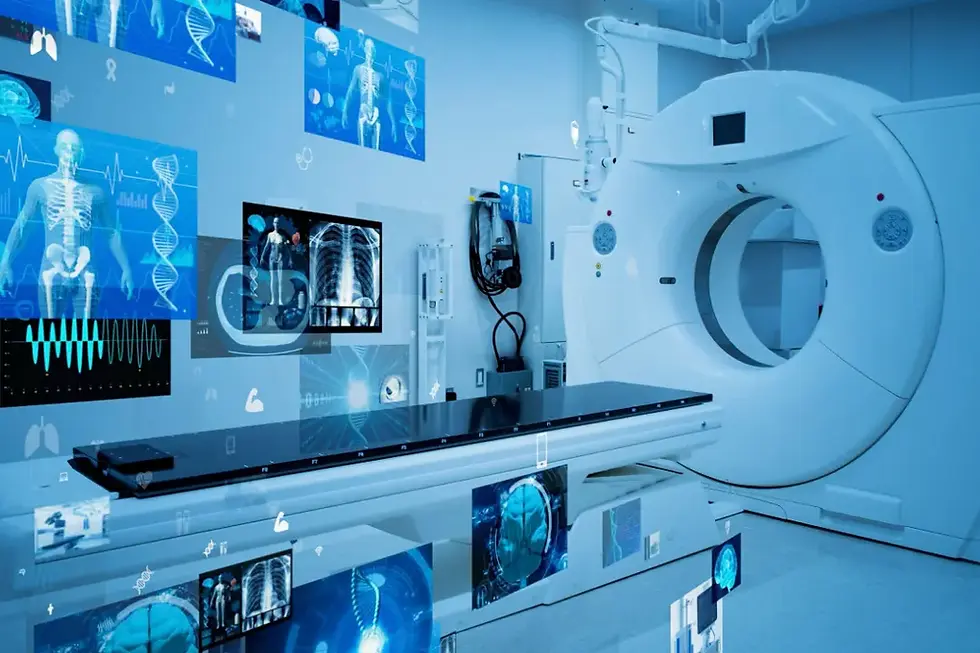New crystal camera could significantly improve medical imaging
- Eric H
- Sep 5
- 2 min read
Updated: Oct 4

Two scientists from Northwestern University and Soochow University in China have just built the first successful perovskite-based gamma ray detector that can be used in medical imaging to produce images with record-breaking quality and precision. This new instrument works with single-photon emission computing tomography (SPECT) and is better, cheaper, faster, and safer than traditional nuclear imaging methods.
To see inside a patient, many doctors today use nuclear imaging. A prime example of nuclear imaging is SPECT, which works by implanting a tiny radiotracer into the part of the body to be imaged. As the name suggests, this radiotracer is radioactive--meaning it emits high-energy gamma rays that are able to penetrate tissue. Once outside of the body, these rays are received by a detector, which essentially takes each of these millions of rays as a single pixel. From this vast amount of data an image is created. One of the main issues, however, with these processes is not regarding the radiotracer itself but rather the detector. Cadmium zinc telluride (CZT) detectors are one type but are very expensive and difficult to manufacture. The only other type of detector, sodium iodide-based detectors, are cheaper than CZT detectors but produce images with significantly less quality. While these crystals' abilities for detecting X-rays and gamma rays was discovered in 2013, no real applications had been created until now.
By carefully growing and deliberately shaping perovskite crystals, the scientists created a pixelated sensor that is able to create images with striking resolution. This is because these crystals are able to differentiate among gamma rays of varying energies with resolution much better than that of CZT or sodium iodide detectors. The perovskite-based detector was also able to sense very faint signals from a technetium-99m radiotracer with incredible precision, and remained constistent throughout testing--receiving all the radiotracer's rays without any distortion (warping of images). Perovskite doesn't only mean a better, cheaper way of medical imaging, but could also benefit the patient by reducing the imaging time and potentially the amount of radiation exposed to.
The scientists are optimistic about this new detector's potential in nuclear medical imaging, and as one said, "With perovskites, we can open the door to clearer, faster, safer scans for many more patients around the world. The ultimate goal is better scans, better diagnoses and better care for patients."
Watch:



Comments